Understanding the Landscape of Autism Homeschooling
Homeschooling a child with autism is an increasingly popular choice among parents seeking customized education, safety, and tailored support. As awareness grows and legal frameworks vary by state, families are exploring flexible curricula, supportive environments, and social opportunities to enhance development. This comprehensive guide delves into legal requirements, curriculum options, socialization strategies, and practical tips to help parents navigate the rewarding journey of homeschooling children with autism.
Legal and Regulatory Foundations for Homeschooling with Autism
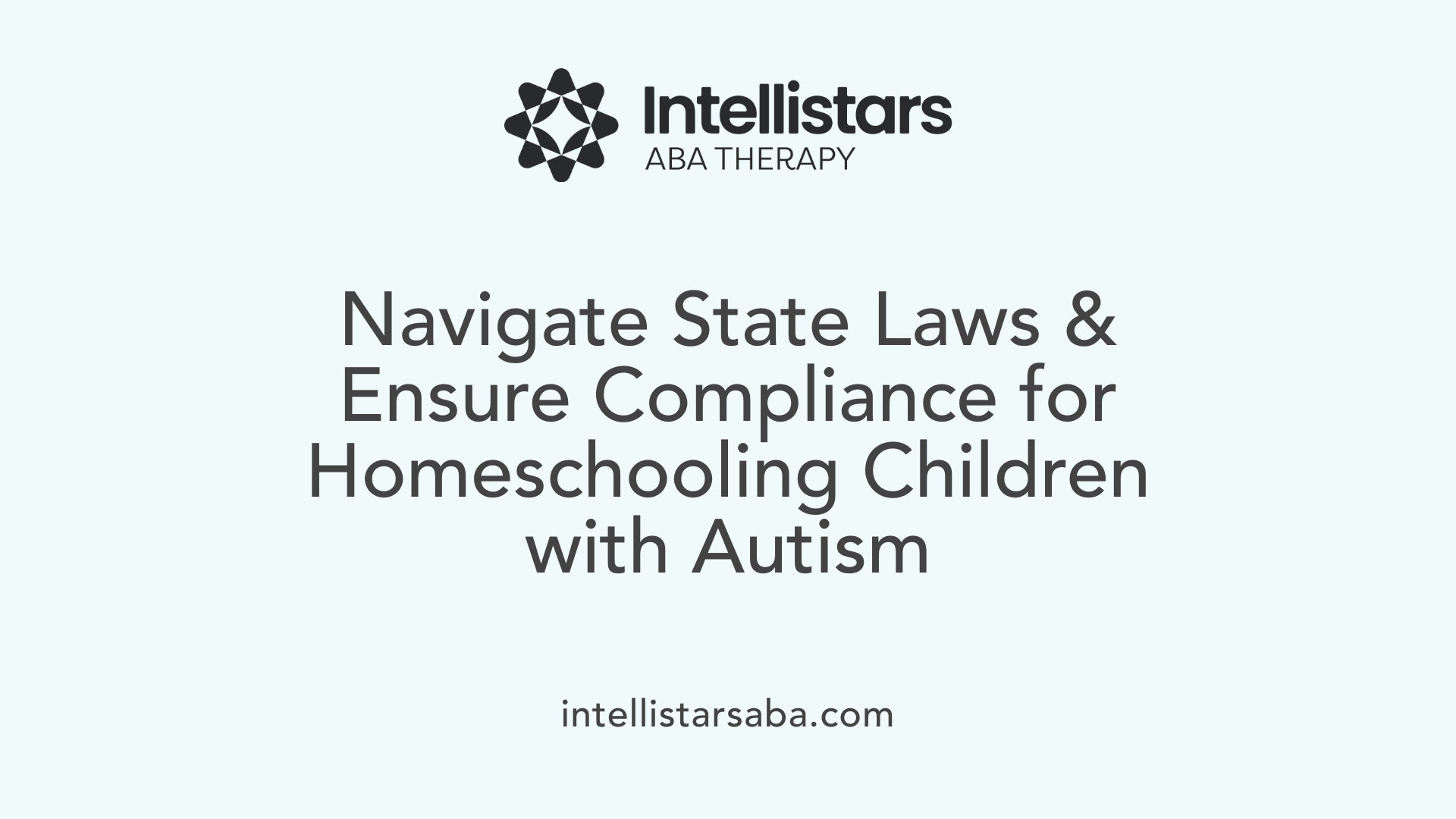
What are the legal requirements and regulations related to homeschooling children with autism?
Homeschooling laws are primarily regulated by state legislation, meaning the rules can vary widely depending on where you live. In general, parents who choose to homeschool must file a Notice of Intent or equivalent document with their state or local education authority. They are also required to keep specific records, including attendance logs, immunization records, and any assessments or standardized tests.
For example, in North Carolina, homeschooling is overseen by the Division of Non-Public Education (NCDNPE). Parents must submit a formal notice indicating their intention to homeschool. They need to hold at least a high school diploma or its equivalent and operate the homeschool for at least nine months each year. Additionally, they are required to administer nationally standardized achievement tests annually in core subjects such as English, reading, spelling, and math.
Access to public services and testing also varies. While public schools are usually required to perform educational testing if requested by parents, laws around the provision of related services like therapy or counseling differ among states. For children with autism, this can mean limited or tailored access to support services. Often, therapy hours associated with an Individualized Education Program (IEP) can be counted towards homeschool hours if properly assessed and coordinated with service providers.
Understanding and navigating the local homeschooling regulations is essential to ensure compliance. Parents are advised to consult their State Department of Education or specific district regulations to clarify requirements and available support options for children with autism. Compliance not only sustains legality but also helps families access potential resources such as assessments, special programs, and supplemental therapies.
Advantages and Challenges of Homeschooling Children with Autism
What are the benefits and challenges of homeschooling a child with autism?
Homeschooling children with autism can offer numerous advantages tailored to their specific needs. One of the primary benefits is the ability to provide individualized instruction that focuses on the child's strengths and interests. Unlike traditional classrooms, homeschooling allows educators and parents to customize learning plans, incorporate multisensory activities, and create sensory-friendly environments, reducing overstimulation and anxiety.
Safety is another significant benefit. Homeschool environments are free from typical school hazards such as bullying, peer pressure, and sensory overload, making it a safer and more comfortable space for children with autism. Additionally, homeschooling facilitates the integration of therapeutic interventions, such as speech and occupational therapy, directly into daily routines, thereby enabling continuous progress monitoring.
Flexible scheduling is also a major advantage. Parents can adjust lessons based on the child's daily health, mood, and energy levels, providing a more relaxed learning atmosphere that can improve emotional well-being. Activities outside the household, like co-ops, social groups, and community outings, support social development and inclusion.
However, homeschooling for children with autism does pose challenges. It requires a substantial investment of time and effort from parents, who often need to take on the roles of educator, caregiver, and therapist simultaneously. This can be demanding, especially for parents lacking specialized training or resources.
Furthermore, social isolation is a concern, as children may miss out on daily interactions with peers unless parents actively seek out organized social activities, support groups, or community events. Finding appropriate curricula and educational materials tailored for autism can also be difficult, necessitating extra research and creativity.
Parents may also experience stress and burnout from managing both educational and therapeutic responsibilities, highlighting the need for community support and accessible resources. Despite these challenges, homeschooling can significantly improve the learning experience and emotional health of children with autism when planned carefully and supported adequately.
| Benefits | Challenges | Details |
|---|---|---|
| Individualized instruction | Parental workload | Requires significant planning and time investment |
| Sensory accommodations | Need for training/resources | Custom environments help reduce stress and overload |
| Safety from external threats | Social isolation risk | Support socialization through activities outside home |
| Flexibility in schedule | Material availability | Tailor learning to daily needs, interests, and pace |
| Integration of therapies | Parental stress | Continuous progress tracking and therapeutic incorporation |
Homeschooling offers a supportive, flexible, and tailored environment for children with autism, fostering growth and well-being. Yet, it demands dedication and resourcefulness from parents to navigate its inherent challenges effectively.
Curriculum Options and Educational Techniques for Autistic Learners
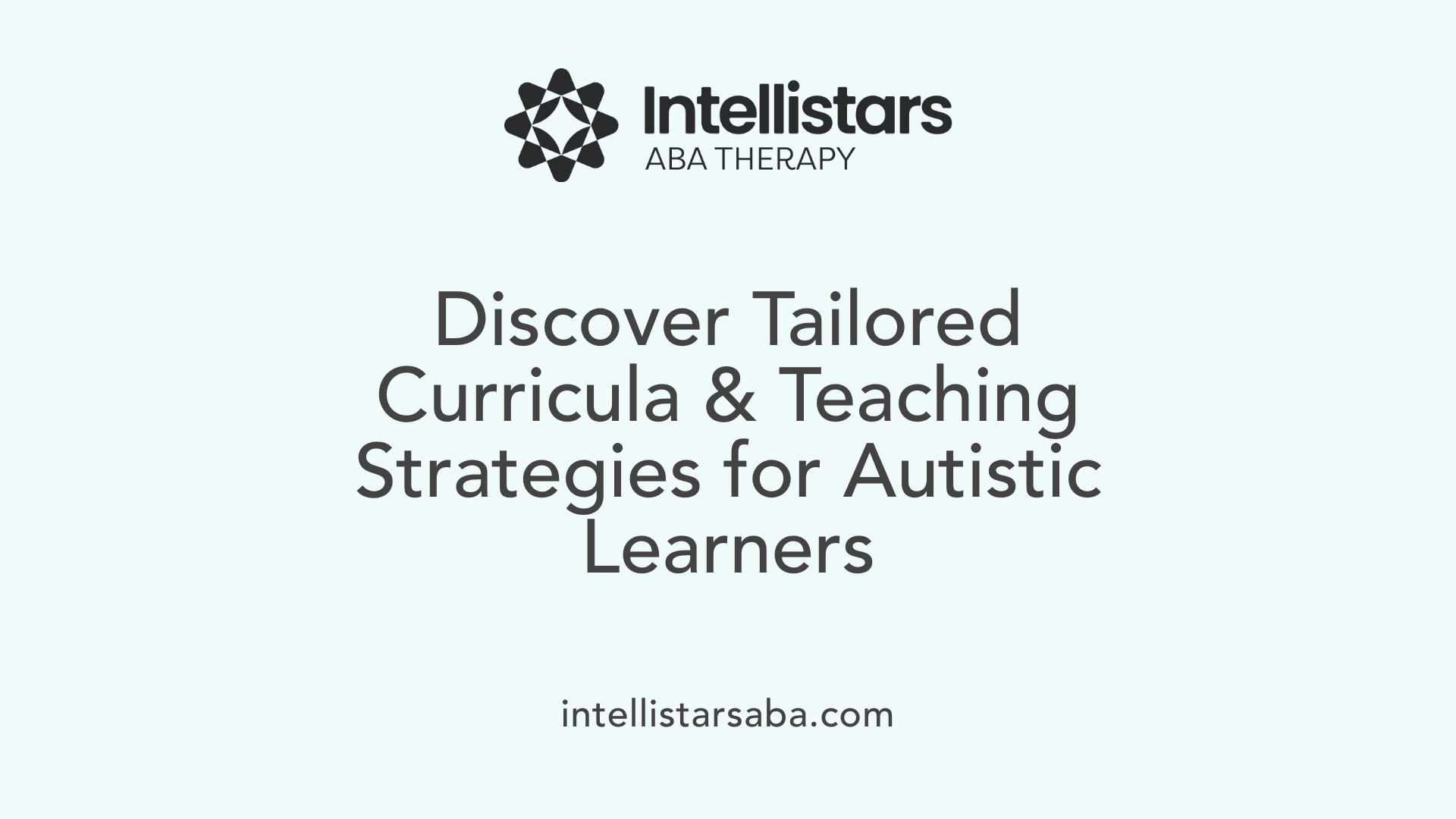
What curriculum options and educational methods are suitable for children with autism?
When selecting educational approaches for children with autism, parents and educators have a variety of options tailored to individual learning styles and needs. Research-backed curricula such as ARIS® focus on foundational skills like early reading, math, and social interactions. These programs often use visual aids, multisensory techniques, and interactive activities to promote engagement.
Play-based curricula, including programs like Playing Preschool, aim to develop skills through natural, engaging activities. This approach emphasizes learning through play, which is especially suitable for young children with autism, fostering communication, social, and cognitive development.
Online adaptive programs such as Gemm Learning and Time4Learning offer customizable, self-paced lessons that adapt to each child's performance. These platforms incorporate visuals, interactive exercises, and multisensory elements to support diverse learning preferences, decrease frustration, and build confidence.
Specialized curricula like ACE (Autism Curriculum Encyclopedia) and TeachTown provide structured, behavior-focused teaching resources. These programs often include social skills training components and are designed to support behaviors associated with autism, using applied behavior analysis techniques and consistent routines.
Adopting a flexible, individualized homeschooling approach allows parents to tailor lessons to the child’s interests, pacing, and unique developmental profile. This method enables integration of various resources, therapies, and social activities, creating a comprehensive and supportive learning environment. Combining these curricula and techniques can lead to improved academic skills, emotional regulation, and social competence, making education a positive experience for children with autism.
Strategies and Tips for Effective Autism Homeschooling
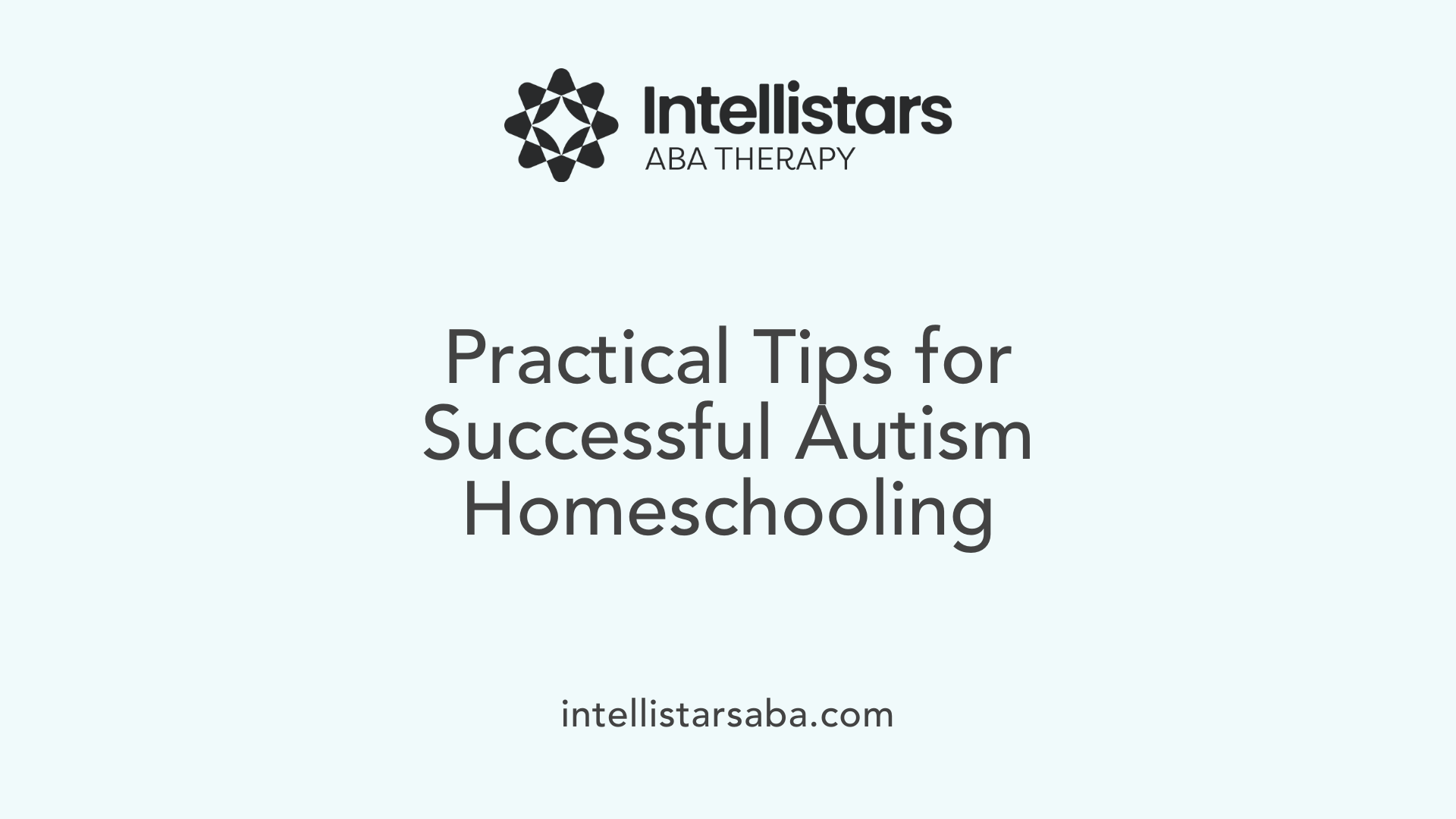
What practical tips and strategies can help make homeschooling effective for children with autism?
Homeschooling children with autism can be highly personalized and rewarding when specific strategies are used to address their unique needs. One crucial approach involves designing a flexible curriculum that combines visual aids, hands-on activities, and multisensory learning methods. Visual supports such as picture schedules, social stories, and color-coded charts help children understand daily routines and expectations, which can significantly reduce anxiety and behavioral issues.
Incorporating therapies like speech and occupational therapy into everyday routines ensures consistent support and helps children generalize skills across settings. Creating a calming, sensory-friendly environment is also vital. Tools like noise-canceling headphones, sensory toys, and designated quiet areas help children manage sensory sensitivities effectively.
Establishing consistent routines and predictable schedules allows children with autism to feel secure and know what to expect. Regular breaks and a balance of structured learning and free play foster engagement and reduce overstimulation.
Social skills development can be promoted through structured activities such as group classes, playdates, and community outings. These activities help children practice communication, sharing, and cooperation in safe environments.
Parents should also stay informed about legal requirements and seek support from local homeschooling groups and online communities. Flexibly adapting strategies based on the child's evolving needs is essential for fostering a positive, effective homeschooling experience.
Socialization and Community Engagement for Homeschooled Children with Autism
What are socialization opportunities and support resources for homeschooled children with autism?
Parents homeschooling children with autism often seek ways to ensure their kids develop social skills and build meaningful relationships. A variety of community activities and support networks are available to facilitate this.
Local homeschool groups and co-operatives offer structured social environments where children can interact with peers in a familiar, supportive setting. These groups often organize field trips to zoos, museums, art classes, and physical activities like sports teams that cater to children's interests and comfort levels.
Online platforms also play an essential role by providing virtual social opportunities. Parents can connect their children with peers who share similar interests through online groups and forums, fostering friendships and social skills without the stress of large in-person gatherings.
Inclusive events such as holiday parties, family nights, or activities organized by religious groups create additional social avenues. These events are usually designed to be accommodating and predictable, helping children with autism feel safe and engaged.
Support networks, including autism-specific curricula and online communities, offer parents resources, advice, and encouragement. Many online groups share ideas for social activities, coping strategies, and success stories, which can be valuable for families navigating homeschooling.
Participation in special clubs like Scouts or programs such as Special Olympics can further boost social confidence. These clubs emphasize teamwork, social interaction, and skill development in a low-pressure, inclusive environment.
In summary, homeschooling does not limit social opportunities; rather, it allows customization based on a child's comfort and needs. Utilizing community activities, online social groups, inclusive events, and support networks helps children with autism develop essential social skills and build lasting relationships outside traditional school settings.
Developing and Maintaining Individualized Education Plans (IEPs) for Autistic Children
How can parents develop individualized education plans (IEPs) and maintain educational records for children with autism?
Creating an IEP for a child with autism involves setting clear, observable, and measurable goals that cover academic, social, and emotional development areas. Parents should start by assessing their child's unique strengths and challenges to tailor the plan accordingly.
Utilizing templates or specific tools can streamline the planning process. For instance, free resources like the THSC IEP generator provide structured formats, helping parents organize objectives, accommodations, and support services.
Maintaining comprehensive educational records is essential. This includes documenting testing results, progress logs, therapy notes, and any adaptations made during homeschooling. These records enable parents to track growth over time, identify areas needing adjustment, and prepare for assessments or transitions.
Although homeschooling laws differ by state, having a formal IEP can facilitate clearer focus for parents and professionals. It also improves communication with therapists and external service providers, ensuring coordinated support.
Regular review sessions to assess progress and update goals are vital. They help keep the learning plan relevant and customized to the child’s evolving needs. Additionally, consistent documentation supports accountability and can be beneficial for external evaluations or future planning.
Involving professionals such as therapists, special educators, and clinicians during the development and review stages can provide valuable insights. Their recommendations can enhance the effectiveness of the IEP, ensuring it promotes meaningful educational and developmental outcomes for children with autism.
Creating Supportive and Sensory-friendly Home Learning Environments
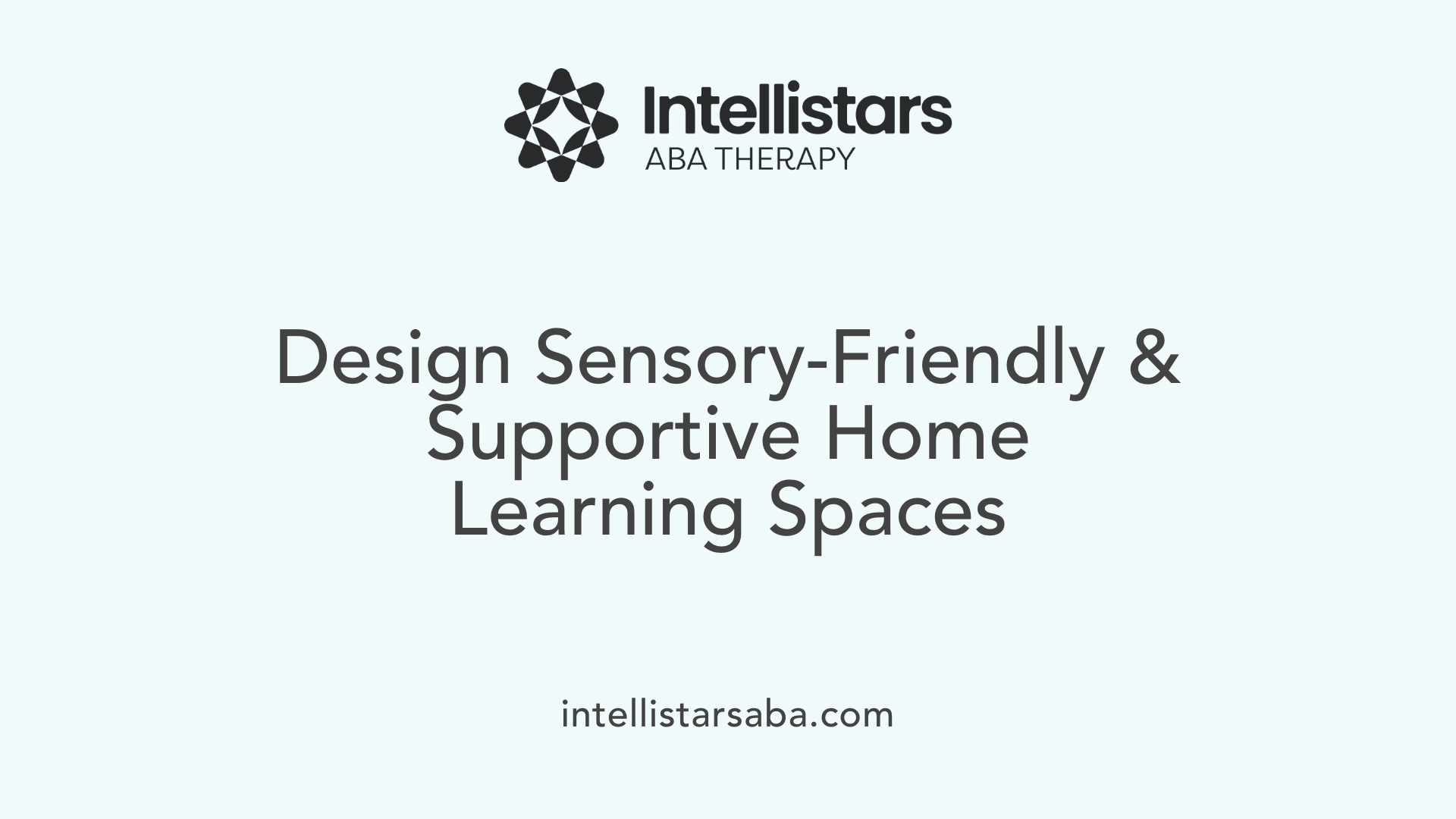
What considerations are important when creating a supportive and accommodating home learning environment for children with autism?
Developing a conducive homeschooling setting for children with autism requires thoughtful planning to address their unique sensory and learning needs. Establishing consistent routines is fundamental. Using visual supports such as daily schedules, social stories, or picture cues helps children know what to expect, reducing anxiety and promoting independence.
Sensory accommodations play a vital role. Providing noise-canceling headphones, creating designated calming spaces with soft lighting, and including sensory tools like fidget toys or textured materials can help manage sensitivities. It's also beneficial to minimize environmental distractions by reducing clutter, controlling noise levels, and organizing learning materials neatly.
Using simple and clear instructions alongside visual aids enhances understanding. Visual cues, like step-by-step pictures or charts, can support comprehension and task completion, fostering greater engagement.
Fostering positive social interactions is equally important. Structured activities like group games, family-led social stories, and safe peer interactions aid social skill development. Incorporating family involvement and peer activities through community programs or online groups can expand social opportunities.
Regularly reviewing the environment and adjusting strategies ensures the learning space remains supportive and effective. Customizing the setup based on the child's evolving needs encourages confidence, promotes learning, and creates a nurturing homeschooling experience tailored specifically for children with autism.
Benefits and Considerations for Homeschooling Children with Autism
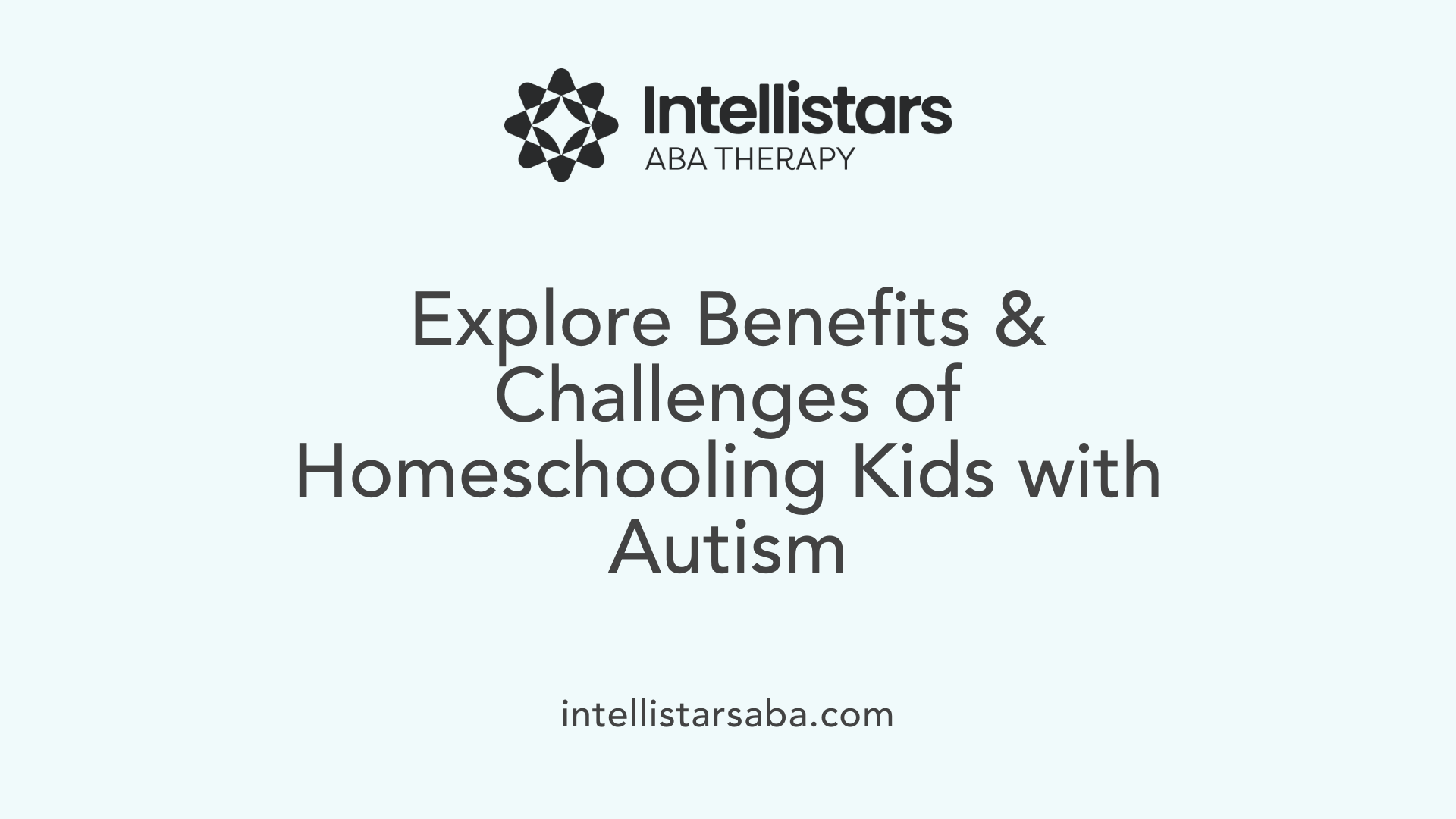
What are the advantages of homeschooling children with autism, and what should parents consider?
Homeschooling offers numerous benefits for children with autism, primarily through tailored educational experiences that attend to each child's unique strengths, interests, and learning styles. Parents have the flexibility to customize curricula, pace, and learning approaches, which can significantly boost engagement, confidence, and academic achievement.
A major advantage is the ability to create a sensory-friendly environment. Homeschooling allows parents to control noise levels, lighting, and sensory stimuli, reducing overstimulation and helping children feel more comfortable and less anxious. This environment can be adapted as needed, incorporating sensory tools like noise-canceling headphones or quiet corners to support sensory regulation.
Safety is another important benefit. Homeschooling minimizes exposure to bullying, peer pressure, and rigid classroom routines typical of traditional schools. This protective setting fosters emotional security, encouraging children to develop social and interpersonal skills at a comfortable pace.
Integrating therapy and life skills into daily routines is more straightforward with homeschooling. Parents can coordinate therapy sessions such as speech or occupational therapy within the day, ensuring continuity and consistency. Additionally, life skills such as cooking, hygiene, and social interactions can be taught practically at home, supporting independence.
However, parents should also evaluate their own capacity to provide or access necessary resources, including specialized curricula, therapies, and socialization opportunities. Regular assessment of progress, ongoing planning, and engaging with community groups and support networks can help optimize the homeschooling experience.
Ultimately, effective homeschooling for children with autism involves careful planning, access to resources, and a supportive community to ensure holistic development and well-being.
Navigating the Homeschooling Journey with Confidence
Homeschooling a child with autism offers a pathway to a tailored, nurturing educational environment that can foster academic growth, emotional well-being, and social skills. While it presents unique challenges—from navigating legal requirements to creating sensory-friendly spaces—these can be managed with thorough planning, community involvement, and access to appropriate resources. Success requires ongoing assessment, flexible adaptation, and leveraging support networks. Parents can empower their children to thrive academically, socially, and emotionally by embracing the personalized potential of homeschooling, transforming challenges into opportunities for growth and connection.
References
- Homeschooling Your Child with Autism
- Homeschooling Toolkit - Autism Society of NC
- Special needs homeschooling curriculum - Time4Learning
- Practical Advice for Homeschooling a Child with Autism
- Homeschooling Your Child with Autism - Autism Society of Maryland
- Pros and Cons of Homeschooling a Child with Autism
- Homeschooling Special Needs Children (How Do I Start)?






